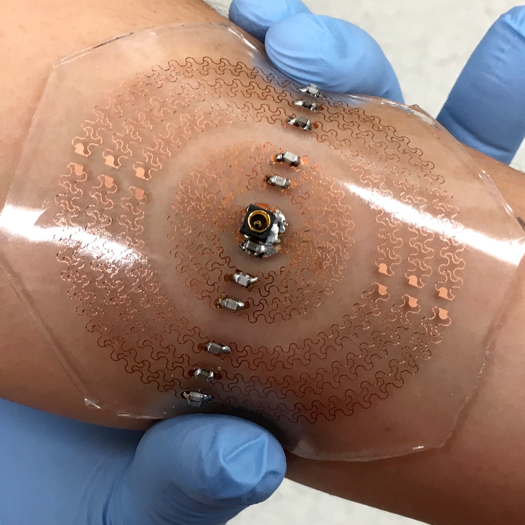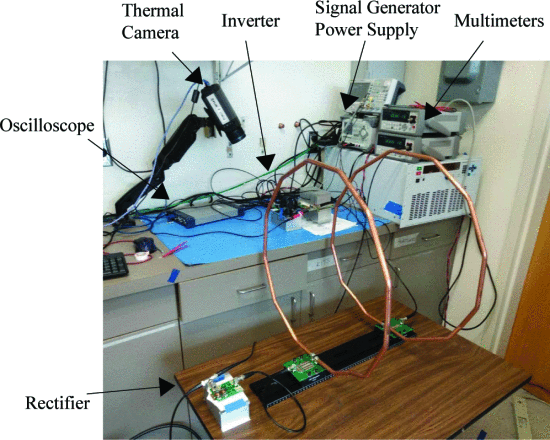Radio Frequency Technologies

Stretchable Wireless Devices
Stretchable wireless devices are central components in the next-generation deployment of conformal and autonomous wearable systems, due to their critical role in communications and wireless powering. However, demonstrations of sophisticated and fully wireless devices remain limited, in part because of existing tradeoffs between mechanics and EM performance, and in part because of difficulties in integrating electronics with stretchable antennas and transmission lines. We have been exploring the use of serpentine copper meshes bonded on elastomers as a general platform for stretchable antennas and transmission lines. By using copper traces, we utilize high quality RF metals that can be patterned using standard lithographic processing. The impedance characteristics of devices based on this platform are characterized using rigorous simulations. As a proof-of-concept demonstration, we experimentally fabricate and characterize stretchable dipole and mid-field antennas, for use in wearable and biomedical applications.

Reconfigurable RF Antennas Enabled by Soft Robotics
An antenna’s performance can be tailored and tuned by bending, twisting, and changing the geometry of the conductor. Three dimensional structural changes often deliver the most dramatic changes in performance, beyond the limits of traditional electronic, optical, or material tuning methods. We propose to use soft robots to produce a diverse array of complex, three-dimensional antennas that have deployable and reconfigurable physical structure. With soft robotics, actuation is performed using electromagnetic-transparent materials, such as plastics and elastomers, which limits any parasitic impact of the soft robot actuators on antenna performance. We specifically explore the use of tip-extending robots, which is a novel class of soft robots that can simultaneously provide structural support and enable mechanical reconfiguration of the electromagnetic devices. The antennas are assembled using growth, string tendon actuation, and inverse pneumatically actuated muscles, and we demonstrate frequency tuning in monopole antennas and symmetry breaking in helical antennas.

Wireless Powering
Wireless power transfer (WPT) is a technology essential for powering remote or inaccessible systems such as moving electric vehicles or biomedical implants. Currently, WPT faces severe limitations in efficiency, power handling capability, and alignment tolerance, preventing its widespread use. We are researching novel coil designs and matching circuit techniques to create more efficient and robust inductive links. The concepts developed in this research will enable more practical use of wireless power transfer in consumer applications.
